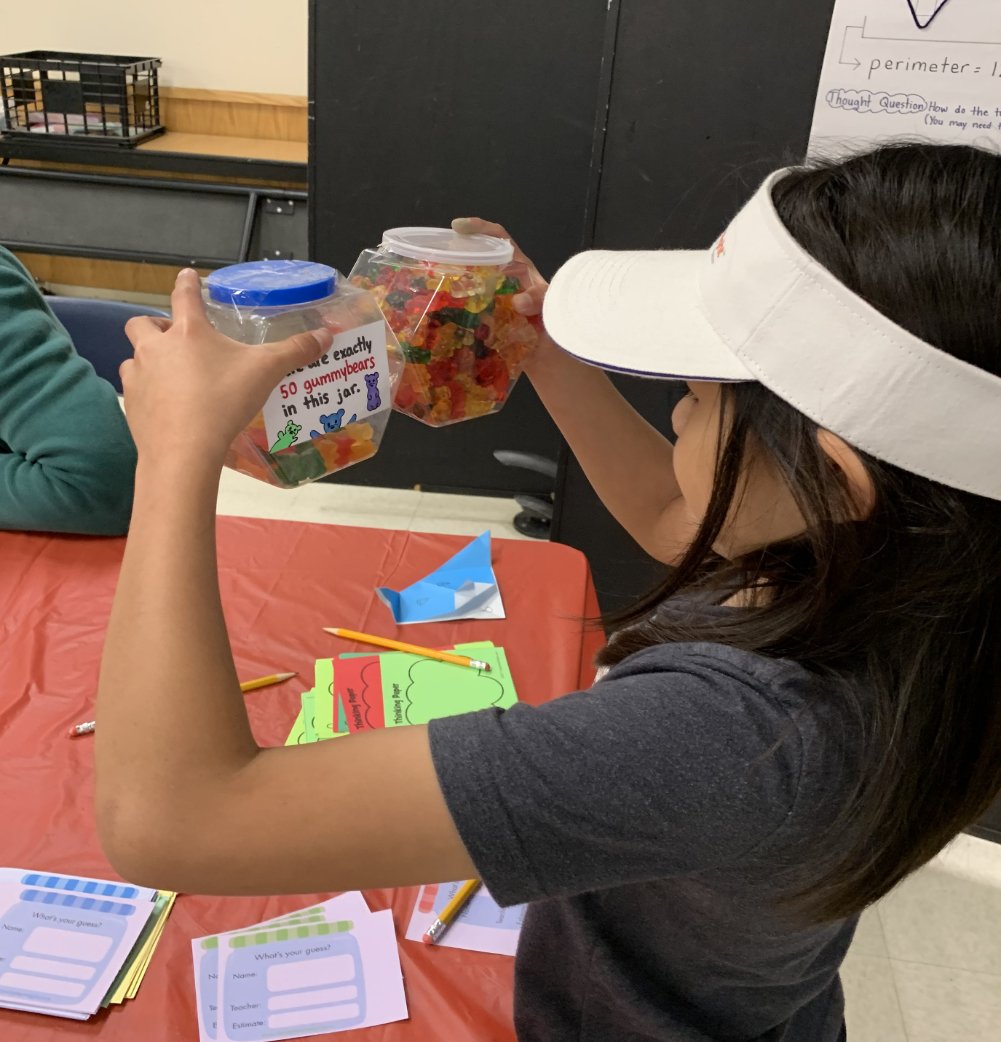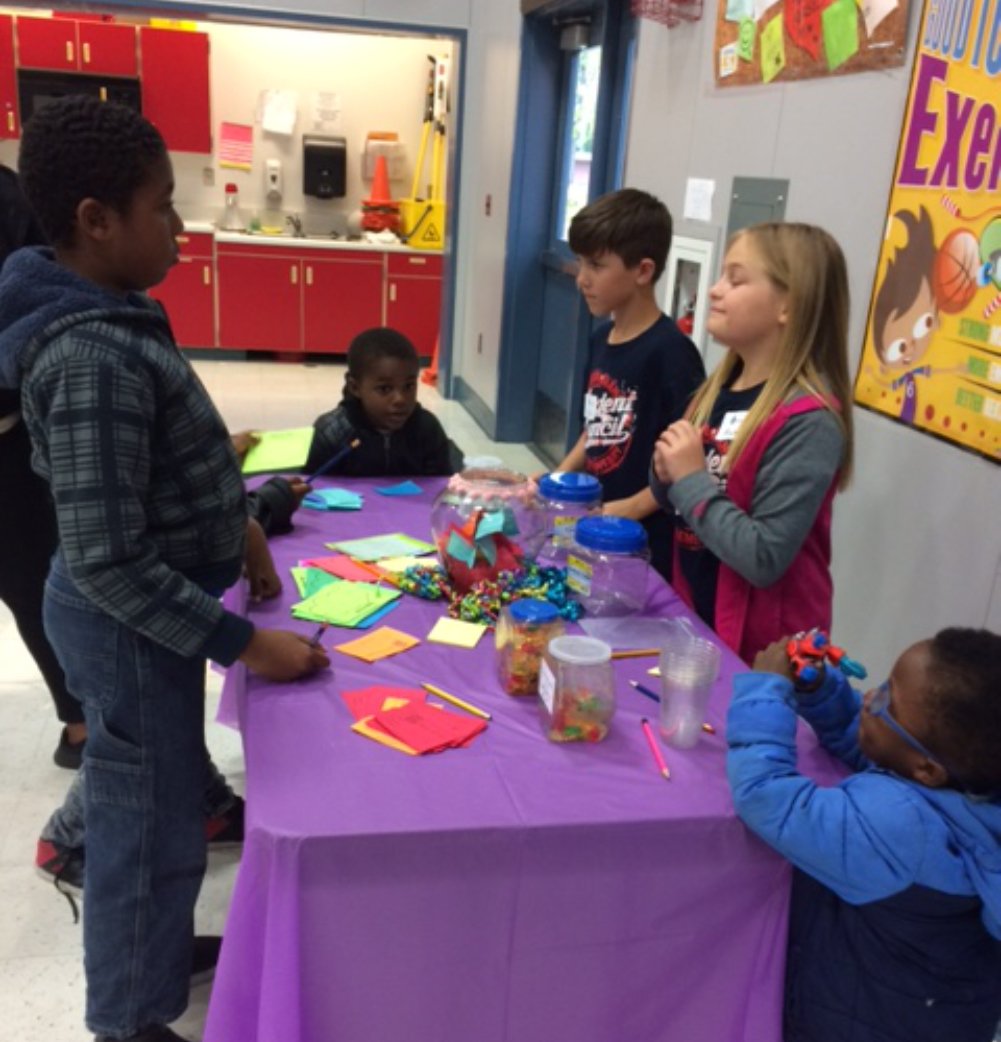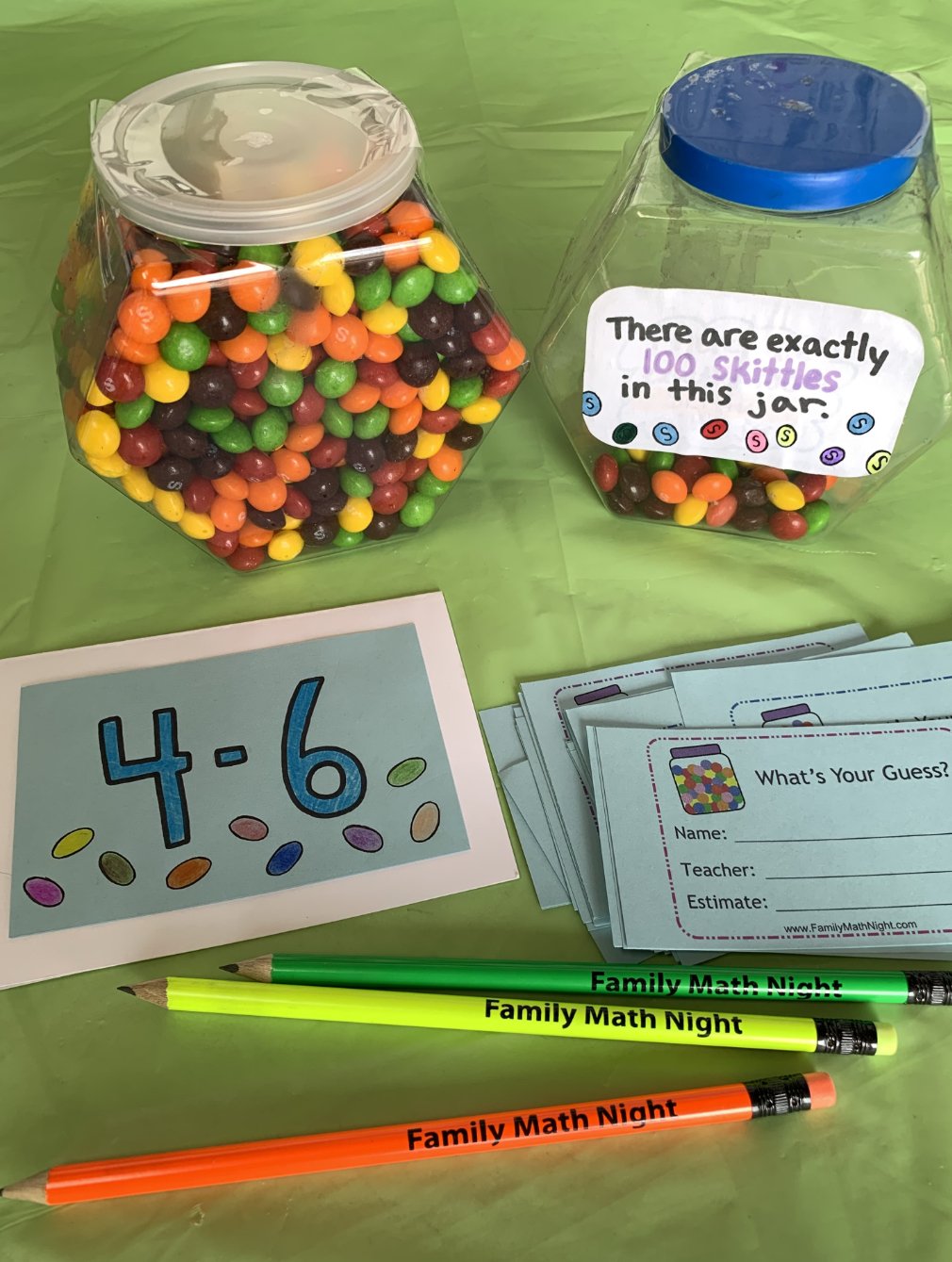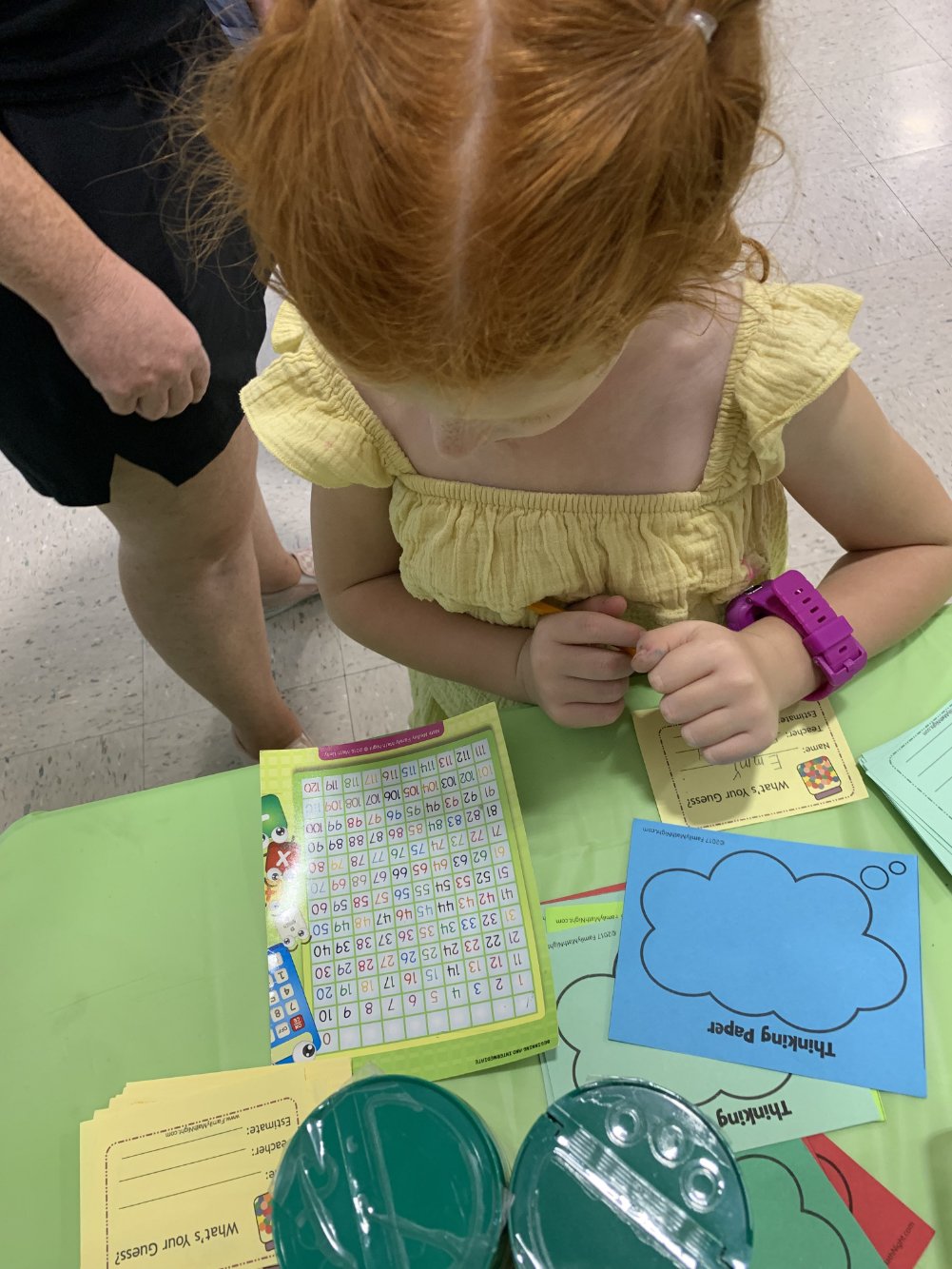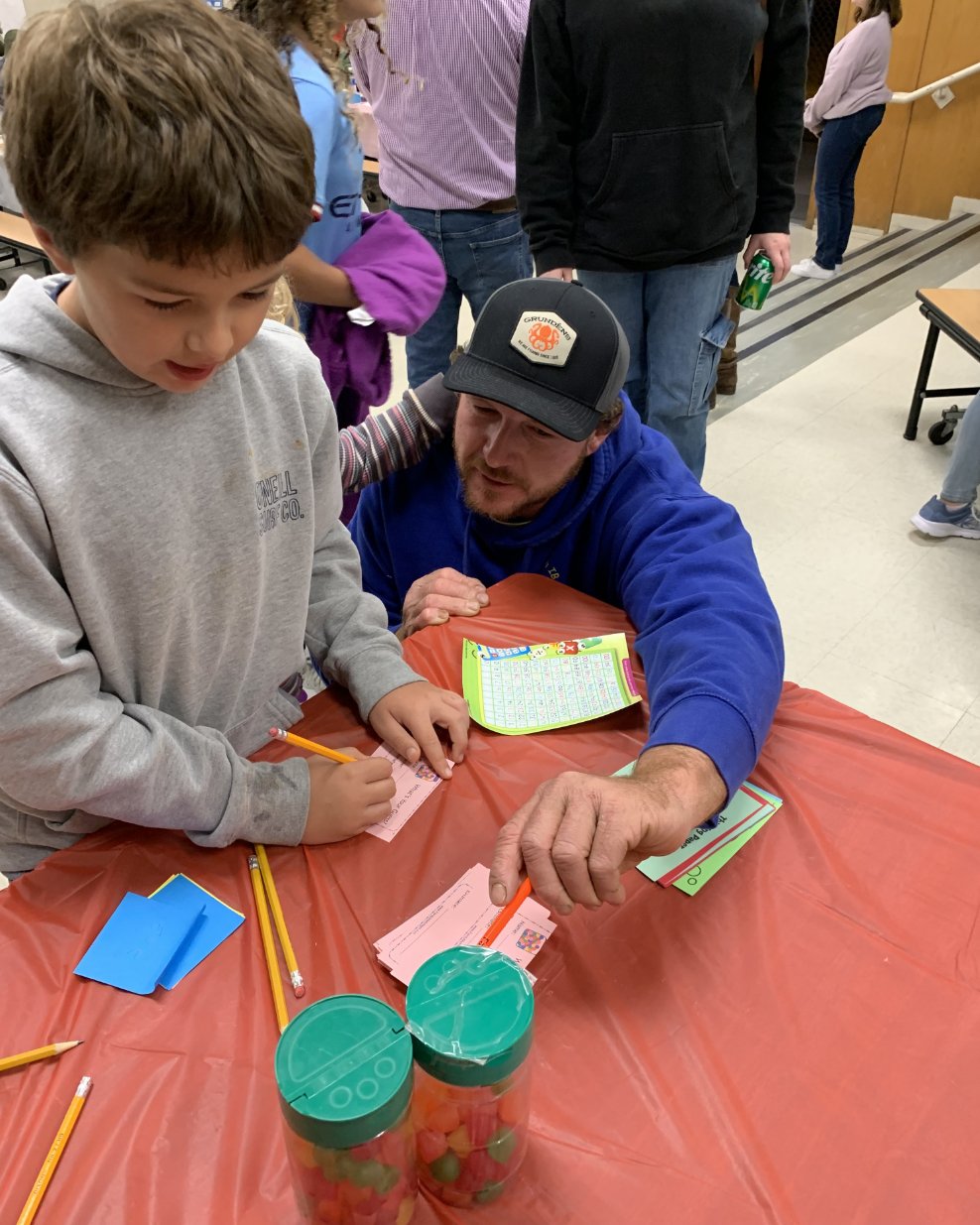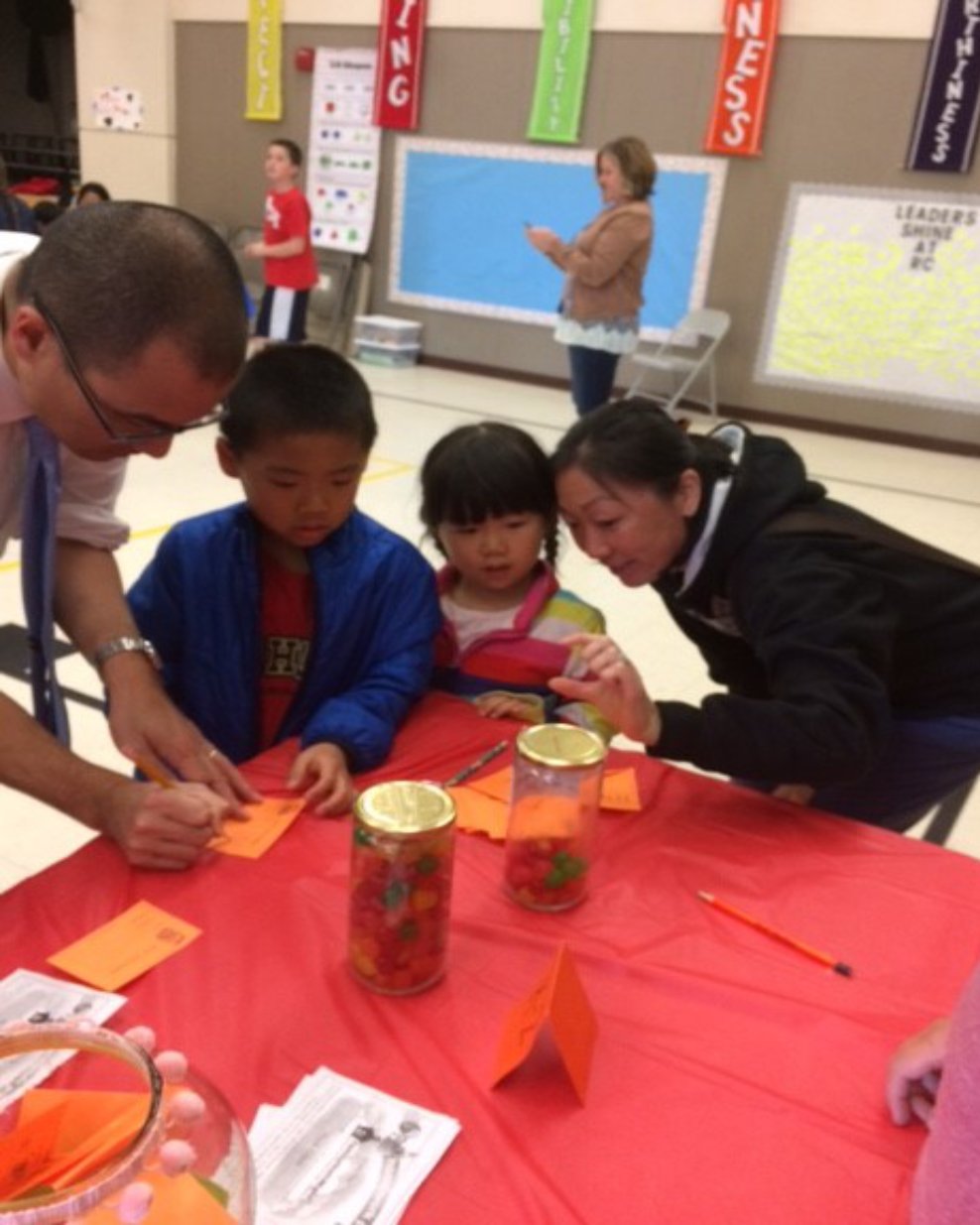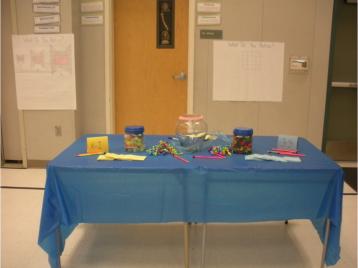
The estimation station, done correctly, is a powerful math activity for developing number sense. Number sense is simply a way to think critically and flexibly about numbers and how they work together. It's the math skill we use most often throughout the day so it's important to give students opportunities to develop it.
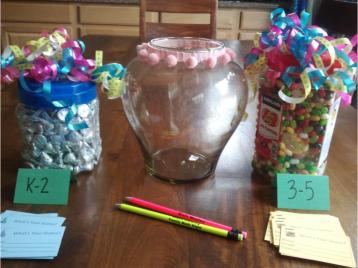
It's nice to include different estimation jars for different grade bands. For example, a K-2 jar and a 3-5 jar. But if you want to get even better estimates, try including three jars: K-1, 2-3, and 4-5. Having three jars makes it easier to tailor the amount of difficulty for the different grade bands.
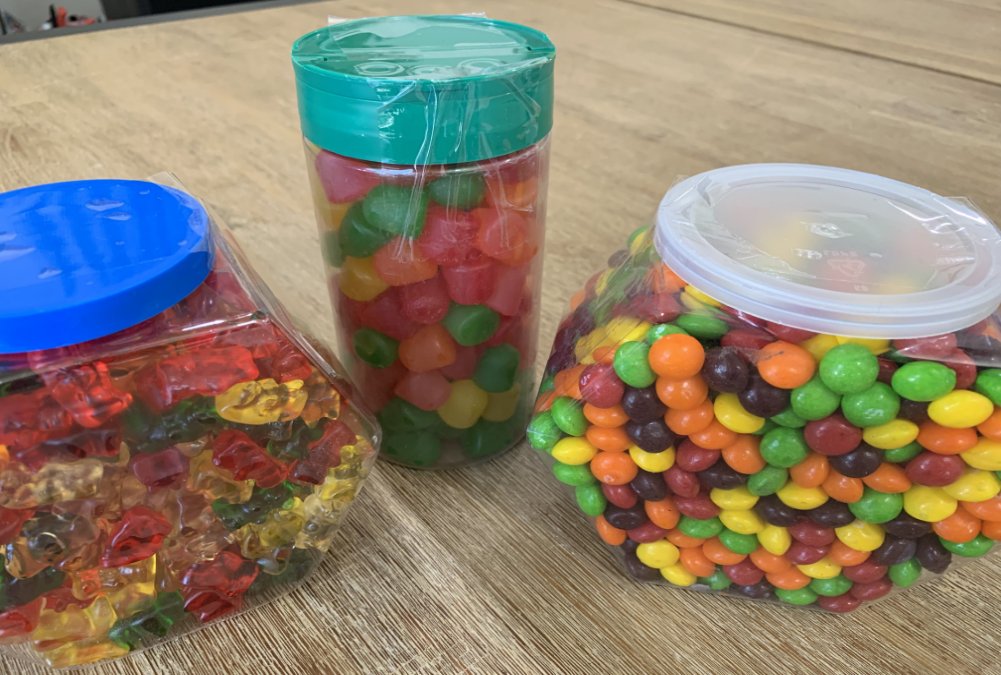
The estimation jars can be filled with candy or other items such as beads, teddy bear counters, etc.
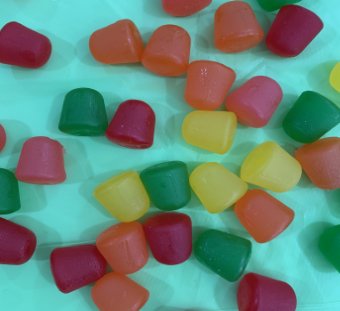
Make sure the items in the jar are the same size. It's hard to make good estimates if the jar is filled with a variety of bite-sized candy bars, gum drops, and jelly beans.
Use larger items for the younger students and smaller items for the older students.
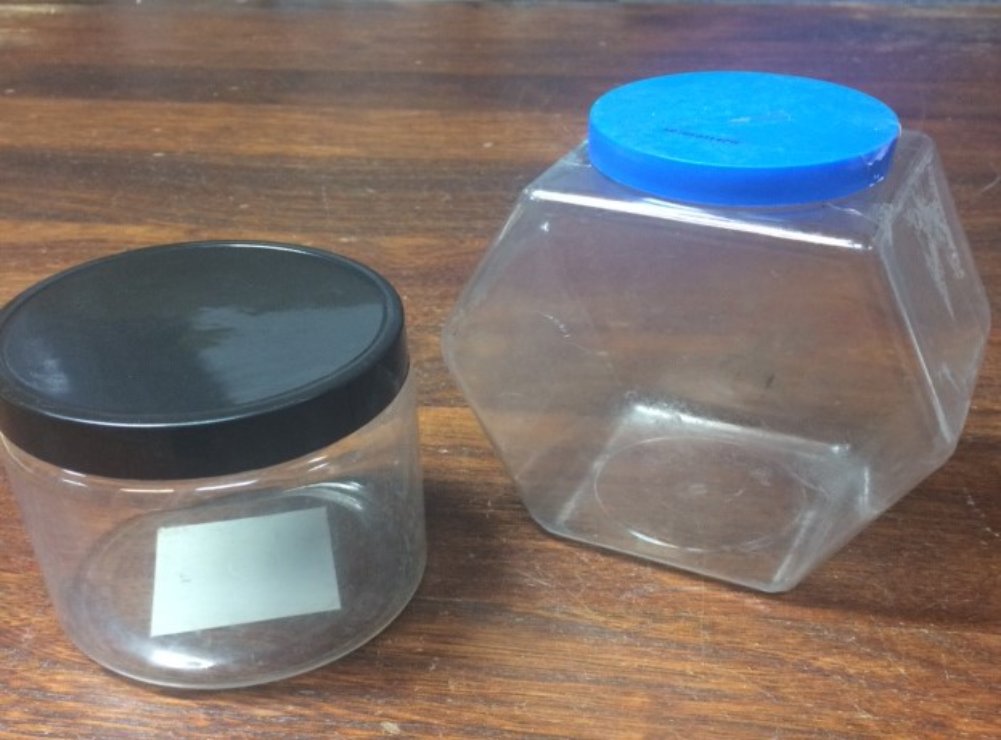
If we really want students to be able to make accurate estimates, then the jar we use is important. It's more difficult to make good estimates with an irregular shaped jar. But a jar in the shape of a cylinder or rectangular prism works extremely well.
Even a hexagonal prism used for the older students works well. That's because students can "layer" the hexagon and use repeated addition (or multiplication) to make a pretty good estimate.
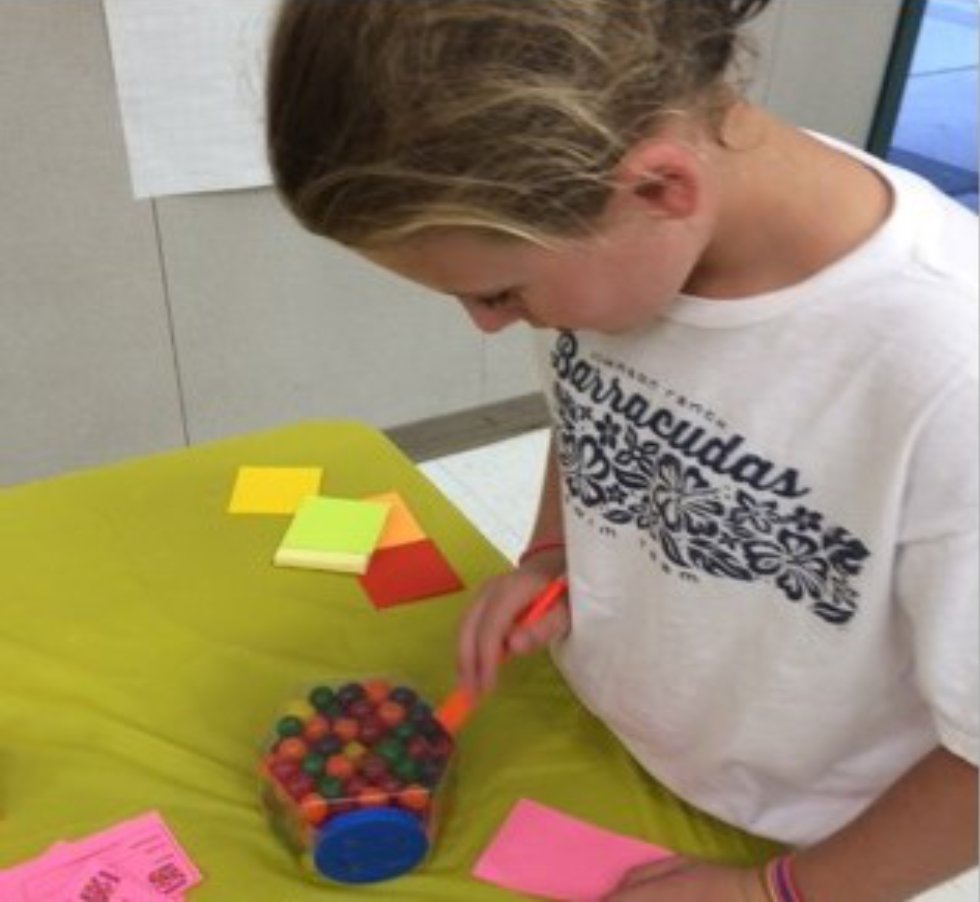
Here's a photo of a student "layering" the hexagon. She counted the number of candies on the hexagonal side and then counted down how many layers of candies she thought there were. Finally, she used repeated addition to determine her answer.
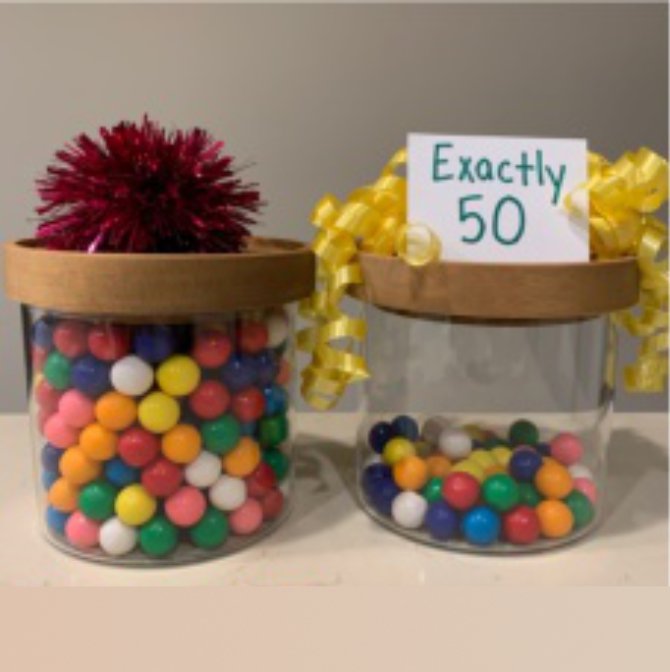
Making estimates can be hard especially if students haven't had a lot of experience with it. To help, include a referent for each of your jars. A referent is like a little hint.
Just put a smaller amount of the item in your referent jar and label it with how many are in that jar. Of course, make sure the referent jar and actual jar are the same size.
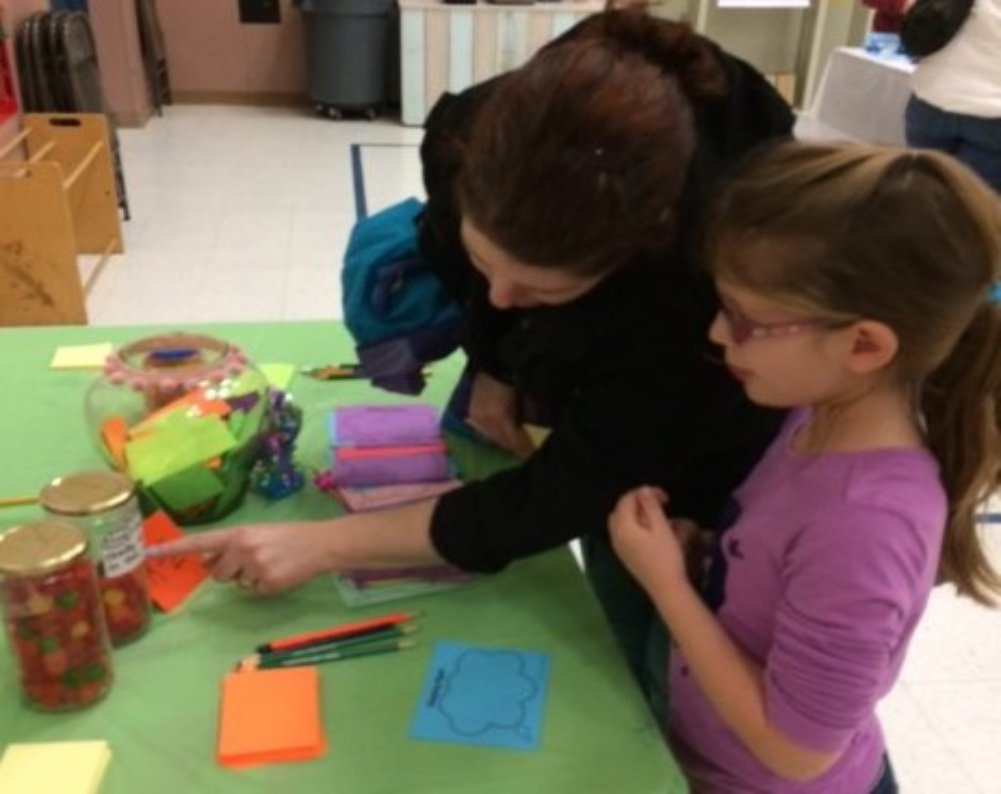
This photo is a great example of the interaction seen between parent and child when a referent is included. Having a referent generates a lot of great mathematical discussion and number crunching which leads to...
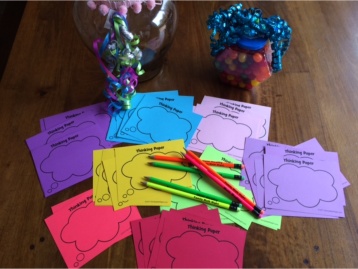
Sometimes we just need to jot down numbers or draw pictures to help us solve a problem. That's why having thinking paper at this station is important. It gives students an opportunity to record their thinking. Here's a blog post about a piece of paper found at the estimation table at the end of an event which lead to the creation of the thinking paper.
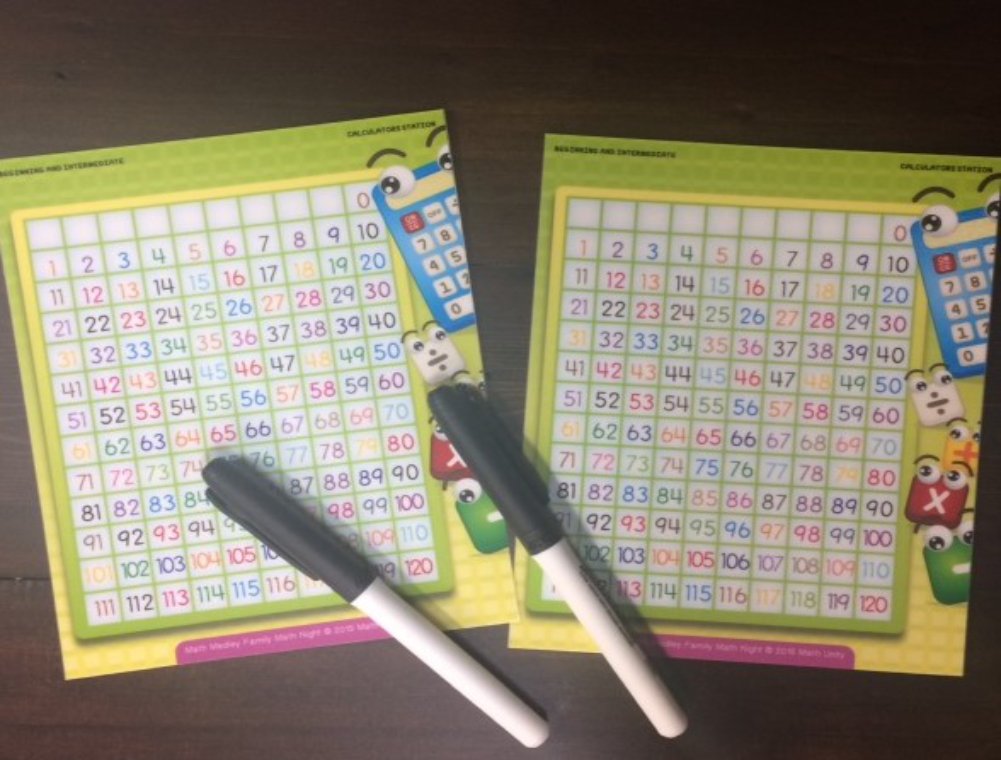
For the younger grades it's nice to include the 0-120 number grids. The number grids pictured come from the Math Medley event kit and are laminated so students can use a dry eraser markers to "think" as they work out their estimation. But any 0-120 laminated grid would work.
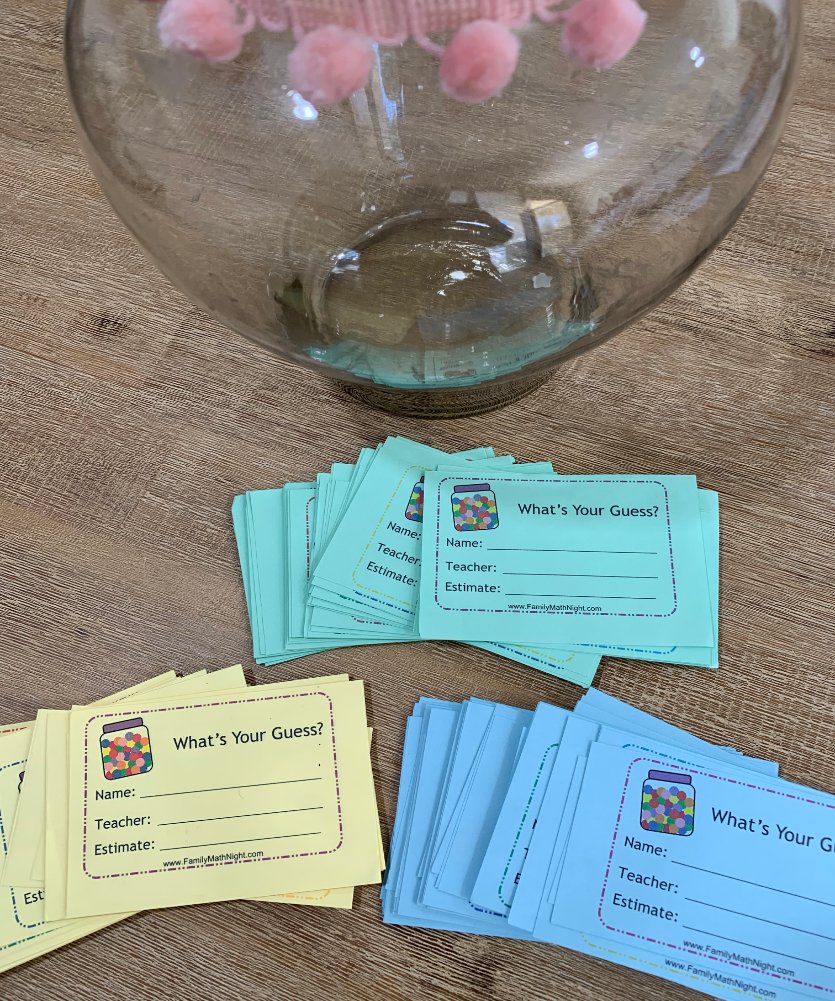
During the event, students place their estimate in a large container. Since all of the slips go into the same container, it’s nice to color-code them to make it easy to separate out at the end of the evening. Because all of the activities in our kits are also color-coded, I decided to use the same colors for the slips:
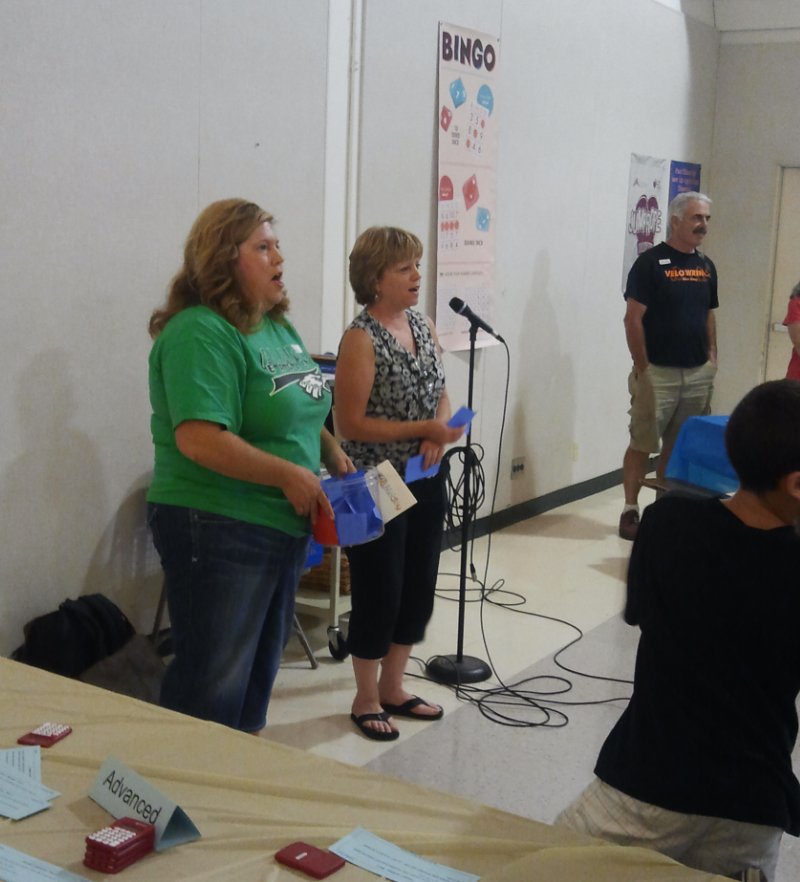
It's hard to announce the winner at the event because it takes awhile to go through all the entries before everyone leaves. But you could give an end time to the entries (maybe 15 minutes before the end of the event) which would give the Facilitator time to count them. Otherwise, the winner is announced the following day. In the case of a tie, the two winners share the goods!
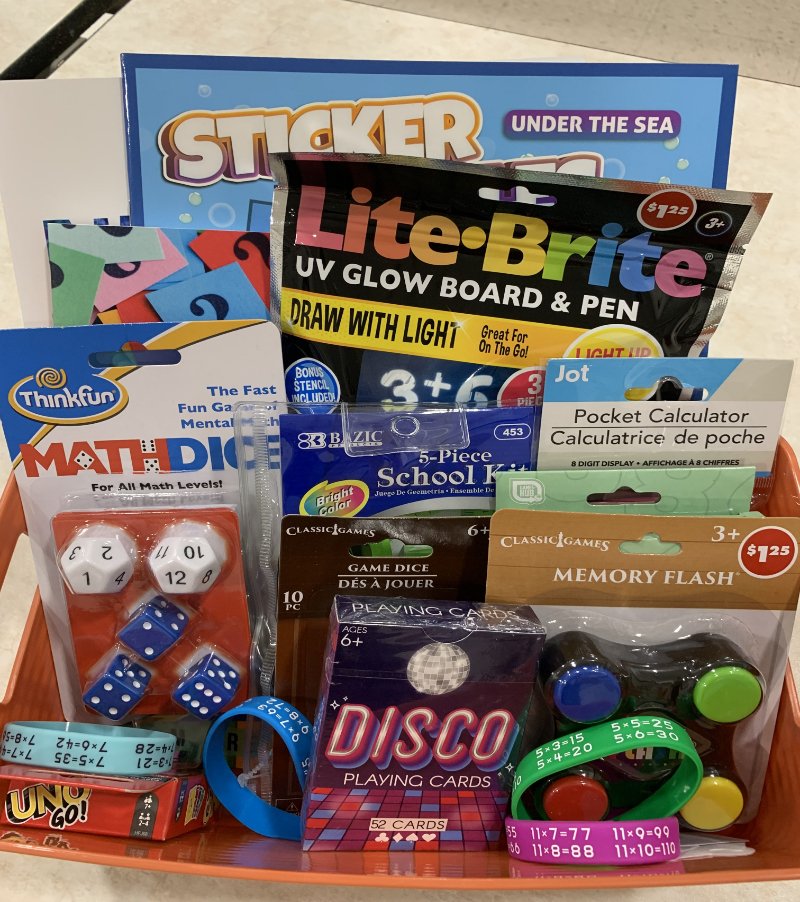
The winners can receive the jar of candy but if you’re trying to stay away from a sugar high, they can receive a prize or prize "basket".
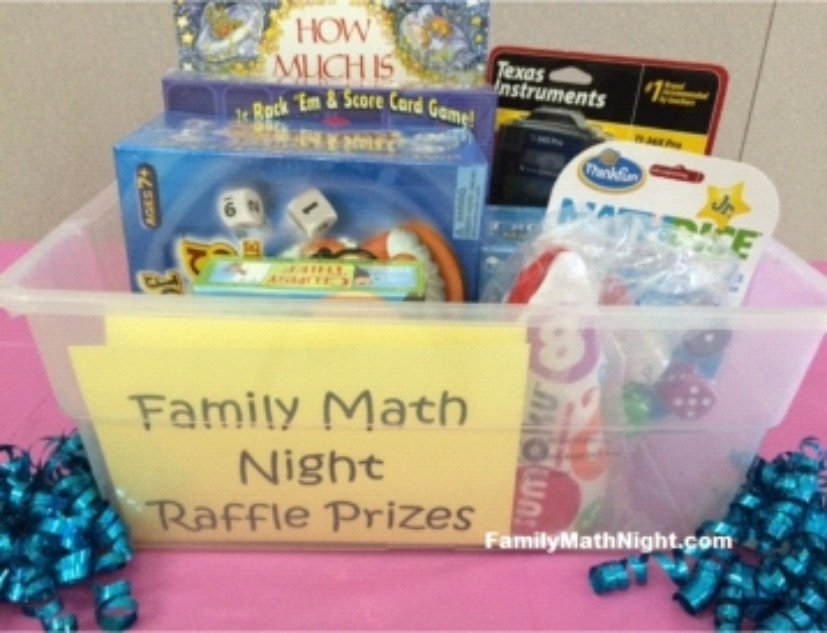
Two weeks before the Family Math Night event, place the baskets in the front office with a sign announcing the event. Visitors can see what what they could win and they get excited to come.
These are tried-and-true tips on how - and why - to include an estimation station at your event.
Here are some photos from different events showing the estimation station in action.
